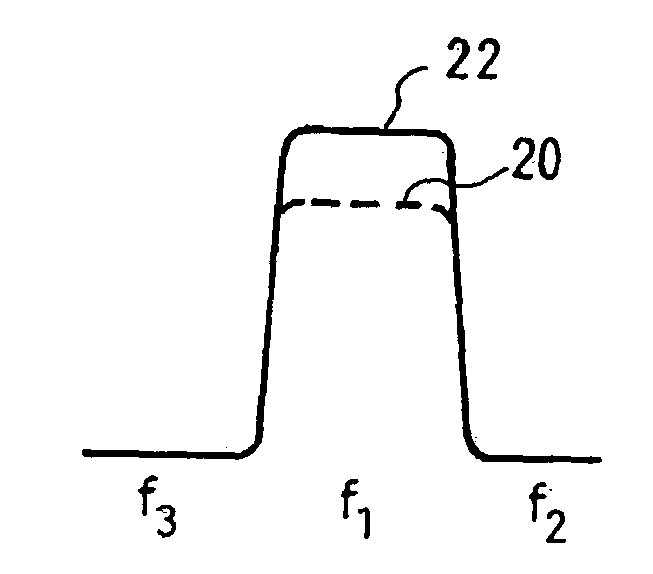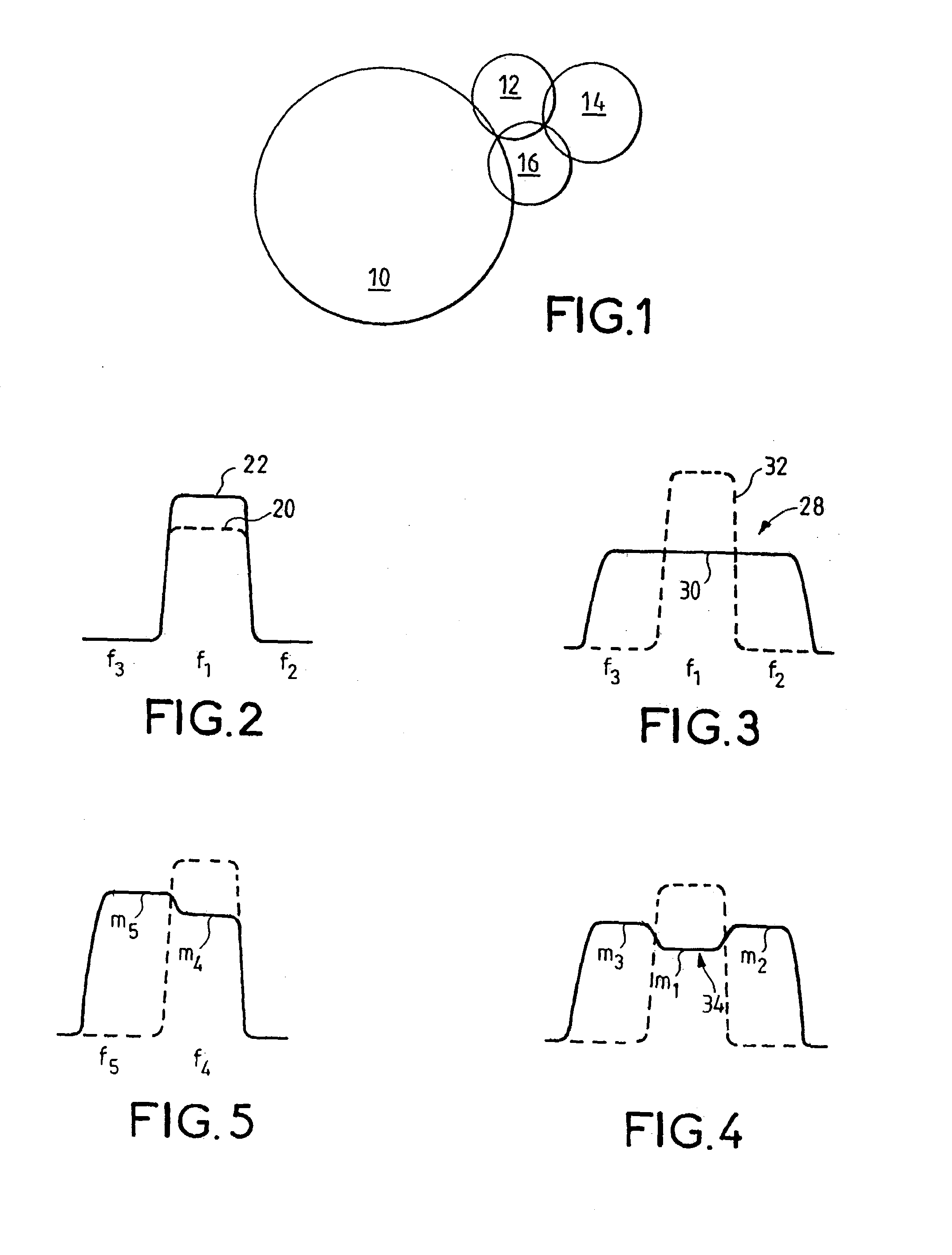Method of transmitting calls in a cellular type telecommunications system using adjacent carrier frequency bands
a carrier frequency technology, applied in the field of cellular type telecommunications system transmitting calls using adjacent carrier frequency bands, can solve the problems of poor signal quality, excessive turnout, and limited pollution of neighboring cells or sites, so as to increase the radius of rural cells (or sites) and high capacity
- Summary
- Abstract
- Description
- Claims
- Application Information
AI Technical Summary
Benefits of technology
Problems solved by technology
Method used
Image
Examples
Embodiment Construction
[0030] The implementation described below with reference to the figures relates to a cellular type telecommunications system for mobile terminals in compliance with the UMTS / CDMA standard. In this example, a base station is used for each site, and the base station of each site comprises a single transmitter and a single power amplifier for a plurality of cells (it being recalled that in the UMTS standard, a "cell" corresponds to a single frequency band only).
[0031] In accordance with the standard, each operator has three or four frequency bands at most, each band occupying 5 MHz, and calls transmitted by a base station to mobile stations have respective codes allocated thereto. The various codes transmitted simultaneously by the base station on the same frequency to the mobile stations are mutually orthogonal so that each mobile station receives only the call which is being sent thereto, by means of the mobile station multiplying the codes it receives by said code. The product of tw...
PUM
 Login to View More
Login to View More Abstract
Description
Claims
Application Information
 Login to View More
Login to View More - R&D
- Intellectual Property
- Life Sciences
- Materials
- Tech Scout
- Unparalleled Data Quality
- Higher Quality Content
- 60% Fewer Hallucinations
Browse by: Latest US Patents, China's latest patents, Technical Efficacy Thesaurus, Application Domain, Technology Topic, Popular Technical Reports.
© 2025 PatSnap. All rights reserved.Legal|Privacy policy|Modern Slavery Act Transparency Statement|Sitemap|About US| Contact US: help@patsnap.com


